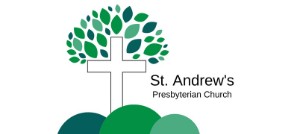Three Meditations
Easter TimeHolding On to Dear Life
The Easter hymn, “Thine is the Glory”, is often used in Easter church services involving the British Royal family. It was also played during a service of thanksgiving in commemoration of Queen Elizabeth II’s 80th birthday. The tune was originally written by the German-British composer George Frideric Handel.
One-hundred and forty years later, Swiss Protestant minister, Edmond Budry wrote this hymn using Handel’s well-known tune. All we initially know about Budry was that he was born near Lausanne, Switzerland. He went to seminary and became a pastor in two Free Churches on the shores of Lake Geneva, Switzerland and then moved to another church nearby where he remained until his retirement 35 years later. Very little is known about Budry and why he may have written this powerful hymn except a brief notation on a hymn site which provided the only clue.
In 1884, early in Budry’s ministry when he was 30 years old, he wrote the hymn to honor the recent death of his wife. Budry was reminded that death was not the end and Jesus’ resurrection provided hope for us in our own death and despair. Because of Christ’s resurrection. Budry wrote “endless is the victory thou o’er death has won,” which refers to that first Easter day, when the disciples were in utter despair and grief at the loss of their Lord. Budry promises, “Lovingly, He greets us. Scatters fear and gloom.”
That indeed happened. The disciples were locked in a room because they were afraid for their own lives and future. The risen Jesus appeared to them with the greeting, “Peace be with you.” His greeting communicated courage and hope, just as he had said earlier, “Peace I leave with you; my peace I give to you.”
Jesus showed them his hands and side. The disciples were overjoyed at his presence and Jesus repeated, “Peace be with you!” adding “As the Father has sent me, I am sending you.” Jesus reminded them of the Presence of the Holy Spirit and then gave them a charge, “If you forgive anyone’s sins, their sins are forgiven; if you do not forgive them, they are not forgiven.”
Jesus clarified to the disciples that they still had work to do, the work of grace. Easter is a call to us as well to leave behind our despair over death and discouragement. As Budry wrote and as we sang,
Thine is the glory
Risen conquering Son
Endless is the victory
Thou o’er death hast won
Hallelujah, Amen
For What Shall We Pray?
In 1922, a pastor had charges brought against him in the Presbyterian Church. This pastor challenged the conventions of the church. He preached that the gospel was broader and more inclusive. When this pastor went against tradition, opponents in the church asked the denomination to correct and rebuke this preacher. That pastor was Harry Emerson Fosdick, who preached for six years at the newly formed First Presbyterian Church that combined three different Presbyterian congregations in midtown New York.
Harry Emerson Fosdick was actually a Baptist pastor and professor of practical theology at Union Theological Seminary in New York City. He continued to preach at the Presbyterian Church until 1925, surviving the controversies. He was then approached by John D. Rockefeller, Jr. to become the pastor of Park Avenue Baptist Church. He declined for two reasons: the church restricted membership to persons who were baptized by immersion and he was unwilling to be pastor under such a restriction. The second reason was that the church was in one of the wealthiest residential areas of the city and the congregation was made up of financially privileged people.
After much negotiation and to Fosdick’s surprise, the Park Avenue congregation agreed to open the church to all Christians on equal terms and would build a new and ample building, the Riverside Church, equipped for community service in a more diverse neighbourhood. The church building was completed in October of 1930.
As the church was being constructed, people would say, “Oh, this new church will be wonderful.” To which Fosdick replied in a sermon, “My friends, it is not settled yet whether or not the new church will be wonderful. That depends on what we do with it. If we should gather [only for ourselves]—though the walls bulged every Sunday with the congregation—that would not be wonderful…But if in this city, this glorious and wretched city…if we could lift some burdens and lighten some dark spots and help to solve the problems of some communities, that would be wonderful.”
Harry Emerson Fosdick wrote our second hymn, “God of Grace and God of Glory” for the formal dedication of the building on February 8, 1931. Fosdick writes in his autobiography that the song “was more than a hymn to me when we sang it that day—it was a very urgent personal prayer. For with all my hopeful enthusiasm about the new venture there was inevitably much humble and sometimes fearful apprehension.”
This hymn is a prayer—a prayer for God to bestow power upon the church and wisdom and courage “for the facing of this hour.” The hour they were facing at that time was the Great Depression, an economic disaster that drained the nation of life and hope. Does that sound familiar?
“Save us from weak resignation” is an important part of the prayer. We are always tempted to believe that the problems that we face far outweigh our resources to deal with them. We are tempted to retreat into a safe place and wait for the storm to blow over. This hymn is fundamentally a plea for God’s help.
Undoubtedly Fosdick knew of Solomon’s prayer, “Give your servant therefore an understanding mind to govern your people, able to discern between good and evil; for who can govern this your great people?”
God validated Solomon because he has asked for himself “understanding to discern what is right.” God promised Solomon, “I now do according to your word. Indeed, I give you a wise and discerning mind…”
The story of the church throughout history is the story of controversy and frustration and sometimes failure along the way. AND the story of the church is the story of God accompanying God’s people through all of that. The story of the church is the story of God’s faithfulness and how God created us to live together. As Fosdick preached, “if we could lift some burdens and lighten some dark spots and help to solve the problems of some communities, that would be wonderful.”
And in the living of these days – in OUR living of these days, may God crown the ancient church’s story with God’s grace and God’s glory, serving thee whom we adore.
When Grace Makes Way for Peace
In today’s final reading we heard the passage from Isaiah often referred to as the Peaceable Kingdom: “No more shall be heard weeping and the cry of distress…” writes Isaiah. “The wolf shall live with the lamb…The cow and the bear shall graze, their young shall lie down together and a little child shall lead them. They shall not hurt or destroy in all my holy mountain.” There is a sense of deep contentment among all creation in which former predators become playmates.
Isaiah envisions a new world. He points us to a world in which creation is at peace, in which injustice and poverty are unknown; where the stranger and outcast are welcomed, and where death and sorrow are no more. Isaiah’s descriptions paint a picture of how things were meant to be. And yet, when we look at our world today, the kingdom of which Isaiah wrote seems nothing but a fairy tale.
Do we read the newspaper and give up on Isaiah’s vision declaring it impossible? Perhaps the realist in us may counter that such a vision is pure fantasy, and it might be. Still, the vision of prey and predator at peace offers us a counter-vision to much of human life. In a world where so many live in fear and worry, such a vision is hopeful.
We sing about it in our final hymn of the morning which was written by Dr. Carl Daw, Jr., the former executive director of the Hymn Society in the United States and Canada and now professor of church music at Perkins School of Theology at Southern Methodist University. Dr. Daw brings his devotion of the church from his years as an Episcopal rector at several congregations in the States.
O Day of Peace that Dimly Shines reflects our challenges of making a reality in our world of the peaceable kingdom. Even with our “hopes, prayers and dreams” as Dr. Daw envisions, our own selfish schemes, our swords of hate and our hearts of envy block us from the realization of justice, truth and love.
Dr. Daw explains his purpose in writing this hymn as, “This hymn deals with two aspects of peace: pax, an understanding of peace based on the cessation of conflict, and shalom, the condition of living in harmony and goodwill. Peace is always God’s gift, but it recognizes the importance of human responsibility in preparing an environment in which peace can flourish.”
How do we work toward God’s vision of a peaceable kingdom? Perhaps we can see this ancient scripture and this recent hymn as an invitation to join with God in transformative ventures, working toward peace and justice and righteousness, and do so by starting both at home and in the church. We are called to pray for God’s grace that the hope of peace be fulfilled within us and work toward that reality in our thoughts, our behaviours and our attitudes toward one another. In that way we become active participants in helping our world come to know the Lord.

